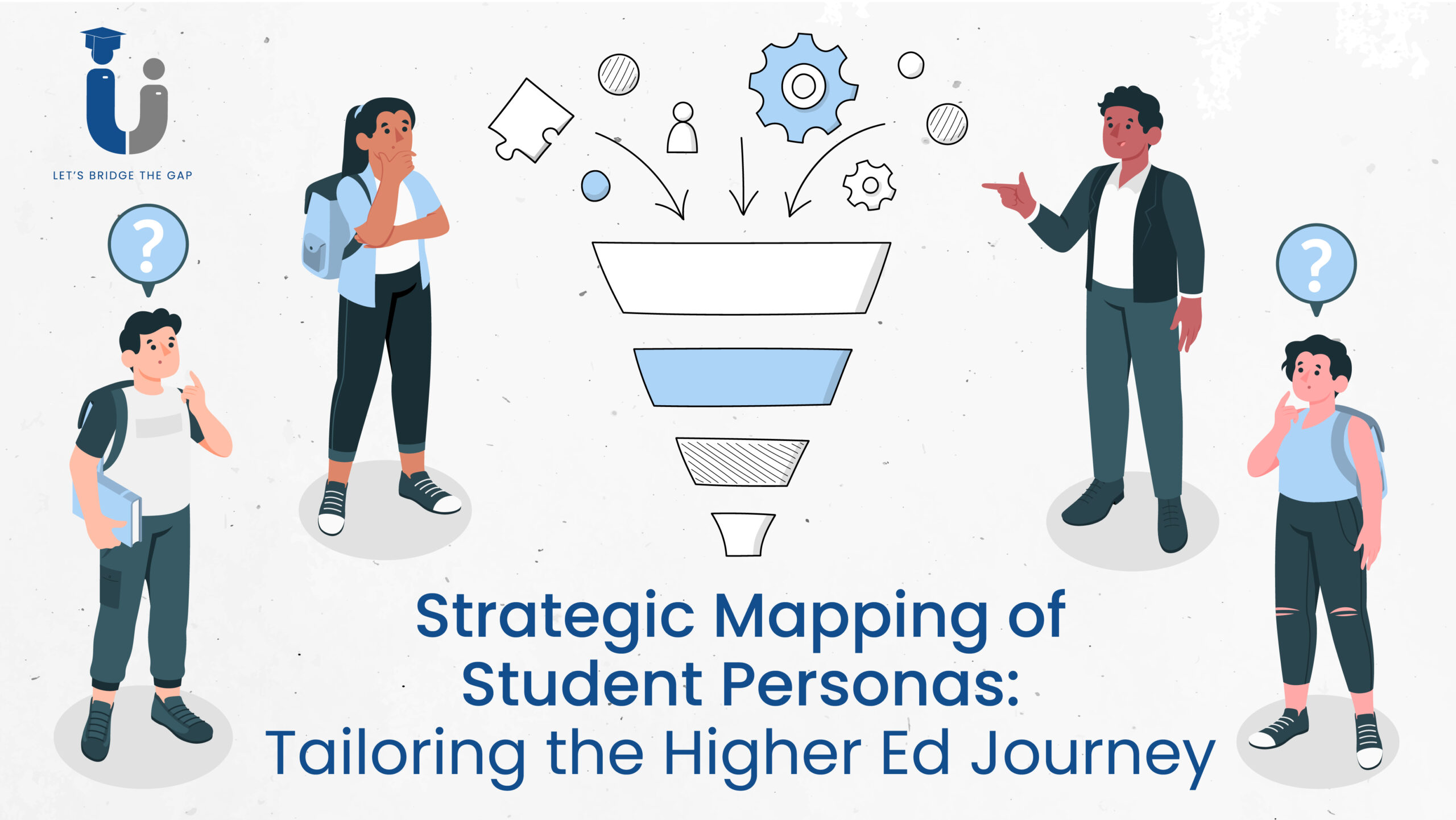Strategic mapping of student personas to higher ed funnels is a strategic approach that enables educational institutions to anticipate and meet the evolving needs of prospective students at various stages of their educational journey. It’s like setting the stage for a play, but in this case, the actors are the incoming prospective students. This proactive method ensures that actual incoming students have immediate access to the information they need, when they need it, and in the format they prefer.
Here’s a more detailed breakdown of how to effectively map student personas to higher ed funnels:
1. Understand Each Step of the Student Journey:
The higher education student journey typically comprises six distinct stages:
- Discover: Prospective students are at the initial stage of their journey. They might have a vague idea of what they want to study and are starting to research available programs.
- Shortlist: At this stage, students have identified a group of higher ed programs that match their initial criteria. They haven’t committed to a specific school yet and are comparing the pros and cons of each option.
- Apply: Prospective students start sending out applications to their chosen higher ed programs. It’s common for students to apply to multiple institutions before making a final decision.
- Commit: Once accepted, students must decide which program to commit to. This stage often involves deciding between multiple acceptance letters.
- Prepare: Even after accepting admission, there’s a risk that students may not be fully committed to attending a particular school. This stage requires ongoing engagement to ensure students remain enthusiastic about their choice.
- Study: Upon arriving on campus, some students may still have doubts about their chosen program. Maintaining engagement during their first year is vital for retention.
Understanding the unique needs and expectations at each stage of this journey is key to creating effective student personas.
2. Analyze Prospective Student Data at Each Step: As students progress through the different stages of the funnel, their needs and concerns change. Data collected at each stage helps institutions anticipate the types of questions and concerns that students are likely to have.
3. Create Student Personas for Each Funnel Stage: Student personas are detailed profiles that represent the typical students at each stage. These personas are constructed using data collected from conversations and should include information such as demographics, goals, concerns, and expectations.For example, let’s take the persona of “Dave,” a prospective student from the US Midwest interested in studying engineering. Dave’s persona at the Shortlist stage includes information about his background, program preferences, and financial concerns.
4. Create Forums for Specific Personas: One efficient way to assist prospective students and manage the workload for your team is to create forums or groups tailored to specific personas. For instance, if a persona is focused on cost-related questions during the Shortlist stage, create a dedicated group for these students. These groups enable like-minded students to connect and receive answers to their questions efficiently.
5. Provide Student Ambassadors with Student Personas: To prepare student ambassadors for their crucial role, offer them full student persona profiles that align with the individuals they will be interacting with. These profiles should include common questions and concerns associated with specific funnel stages.
By utilizing tools like those provided by Edusakha, which leverage AI-infused conversational insights, you can extract valuable data from existing conversations and create comprehensive student personas. This data can also be seamlessly integrated into your higher education CRM.
Mapping student personas to higher ed funnels empowers educational institutions to better understand the needs and concerns of prospective students. By tailoring interactions, content, and support to meet these needs at each stage of the educational journey, institutions can enhance their engagement with students, ultimately leading to more successful admissions and retention strategies. It’s a proactive approach that ensures students find the right information at the right time, in their preferred format, contributing to a more satisfying and effective educational experience.






1 comment